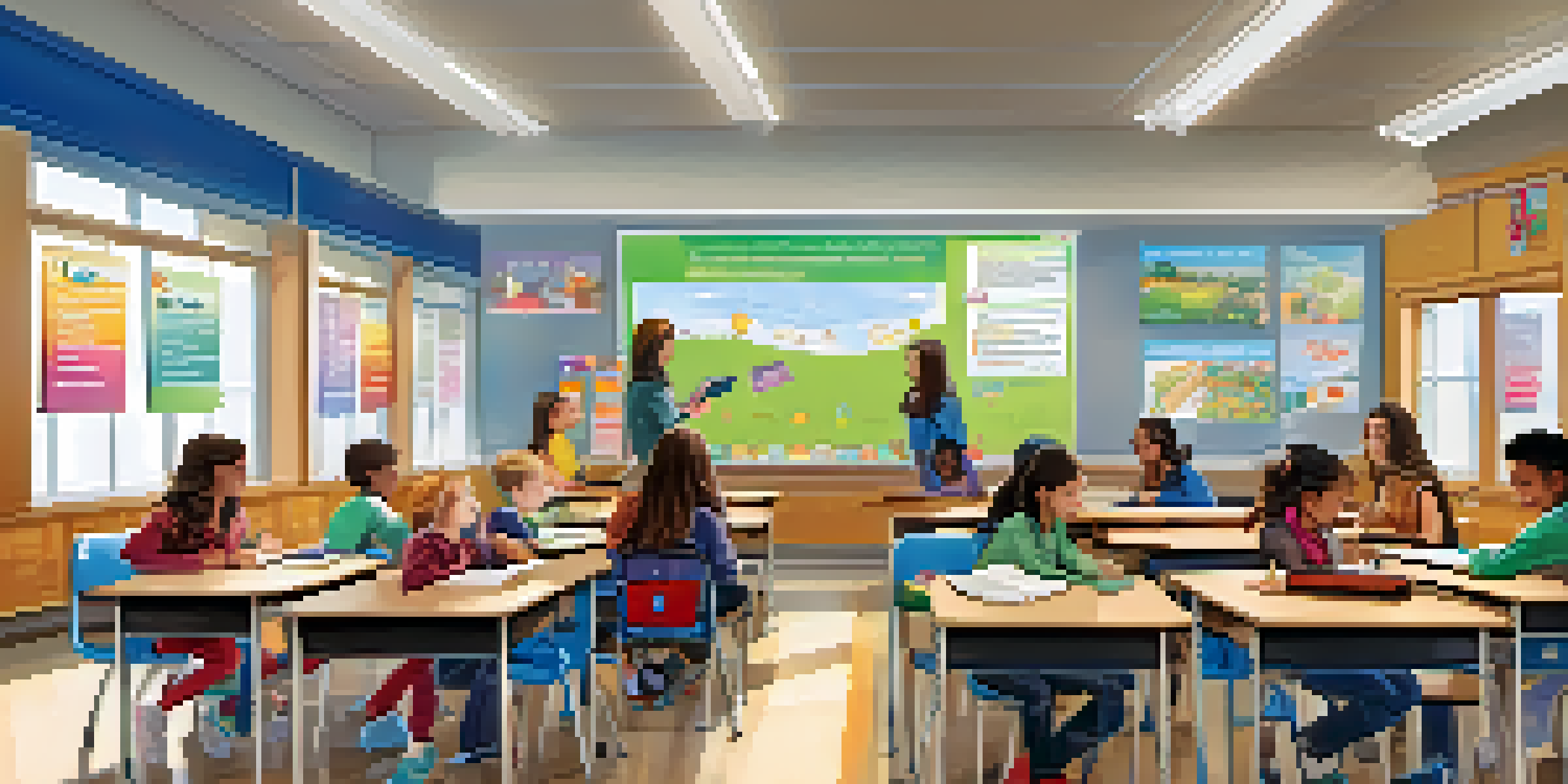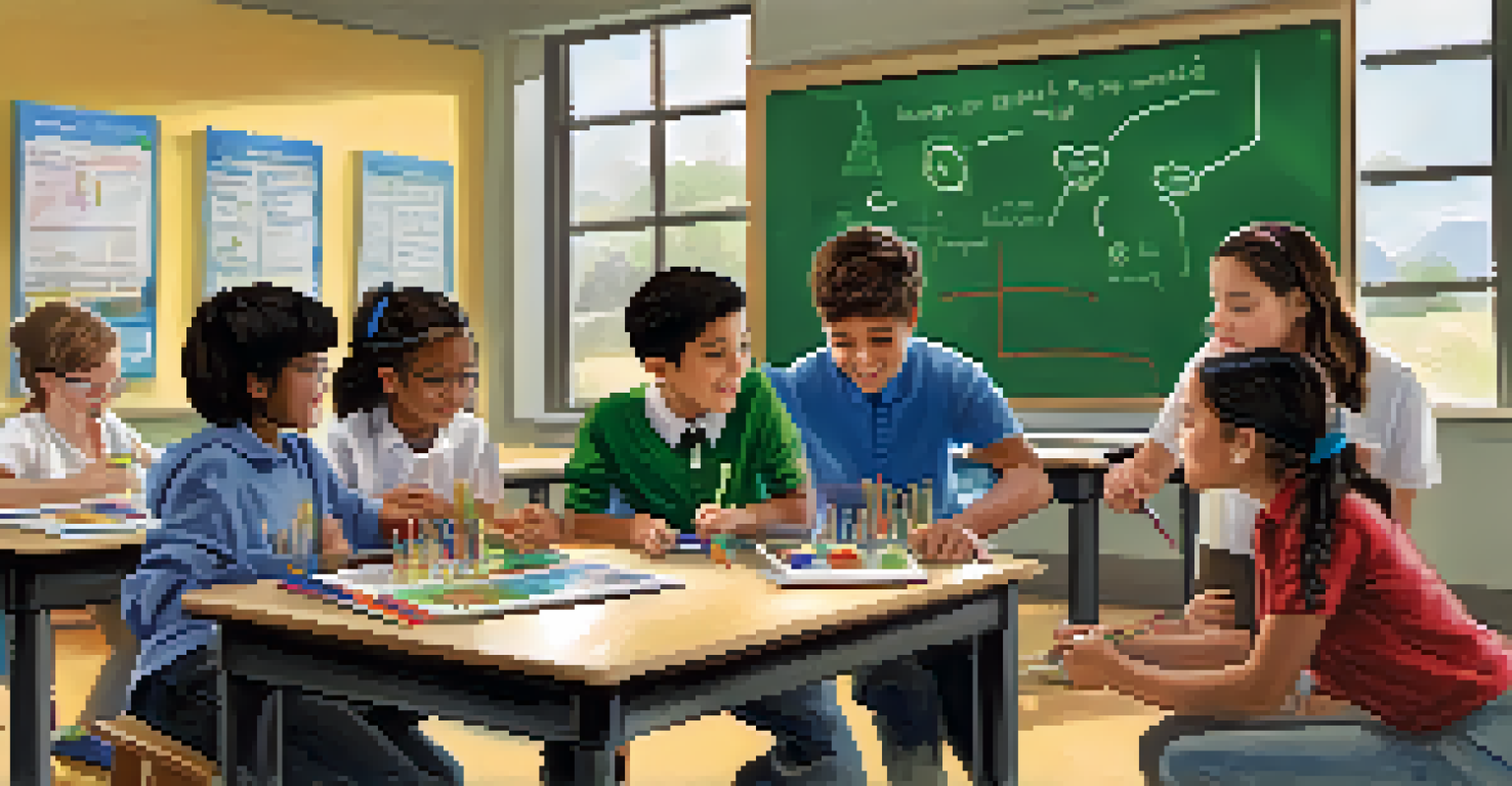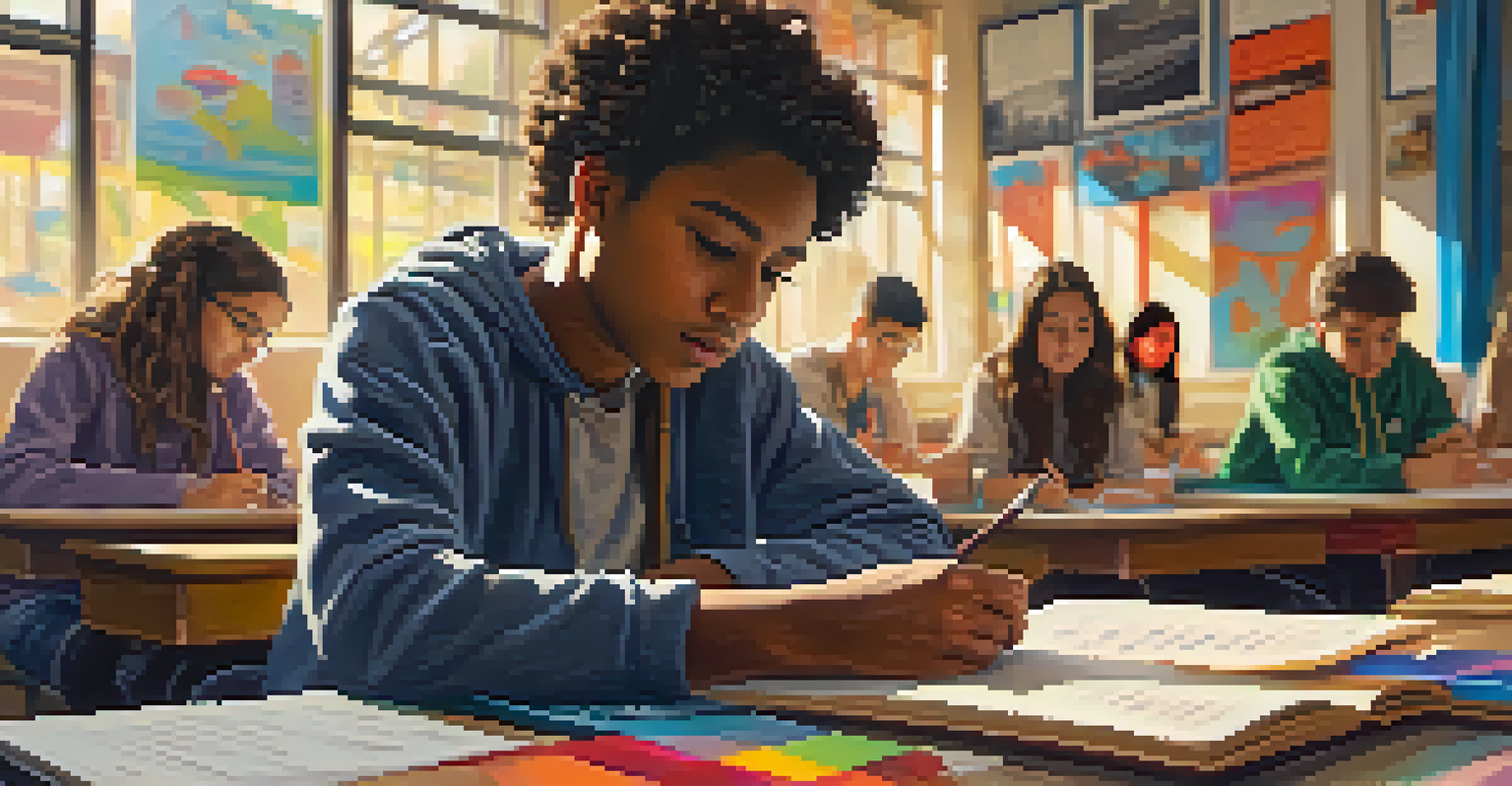Flipped Classroom: Strategies for Building Student Confidence

Understanding the Flipped Classroom Approach
The flipped classroom model turns traditional teaching on its head. Instead of lecturing in class and assigning homework, students first engage with new material at home, often through videos or readings. This approach allows classroom time to focus on collaboration, discussion, and hands-on activities that reinforce learning.
Education is the most powerful weapon which you can use to change the world.
By shifting the responsibility of learning to students, they become active participants rather than passive recipients of information. This method encourages them to take ownership of their education, fostering a sense of independence and responsibility. Ultimately, it helps build their confidence as they engage more deeply with the subject.
Additionally, the flipped classroom allows educators to tailor their teaching methods to meet individual student needs. Teachers can provide targeted support during class time, enabling students to seek help when they need it, which can significantly boost their self-esteem and confidence in their abilities.
Creating a Safe and Supportive Learning Environment
A key element of building student confidence is ensuring a safe space for learning. In a flipped classroom, this can be achieved by fostering open communication and encouraging students to express their thoughts without fear of judgment. When students feel safe, they are more likely to take risks in their learning, which is essential for growth.

Teachers can promote a supportive environment by implementing group activities where students collaborate and learn from one another. This peer interaction can help students feel more comfortable, as they realize that they are not alone in their struggles. Sharing ideas and challenges with classmates can also enhance their confidence in articulating their thoughts.
Flipped Classrooms Foster Independence
By engaging with new material at home, students become active participants in their learning journey.
Moreover, providing constructive feedback is crucial in this environment. Instead of focusing solely on grades, teachers should emphasize progress and effort, helping students understand that mistakes are a natural part of the learning process. This approach nurtures resilience and encourages students to persist despite challenges.
Incorporating Student Choice and Agency
Empowering students to make choices in their learning can significantly enhance their confidence. In a flipped classroom, this can be achieved by allowing students to select topics they are interested in or choose how they demonstrate their understanding. When students have a say in their learning, they are more likely to engage actively.
The only limit to our realization of tomorrow will be our doubts of today.
For instance, offering different project options or allowing students to create their own study guides can spark enthusiasm and motivation. This autonomy fosters a sense of ownership, encouraging students to invest more effort in their work. When they see the results of their choices, it reinforces their self-efficacy.
Additionally, giving students opportunities to lead discussions or teach their peers can further build their confidence. By stepping into a leadership role, they not only solidify their understanding but also gain valuable skills that can enhance their overall learning experience.
Utilizing Technology to Enhance Engagement
Technology plays a vital role in the flipped classroom model, providing students with various tools to learn at their own pace. Interactive platforms, such as videos, quizzes, and discussion forums, can engage students more effectively than traditional methods. This variety keeps learning fresh and exciting, which can boost confidence.
For example, using educational apps that allow for self-paced learning lets students review material as often as they need. This flexibility can help students master concepts before moving on, reducing anxiety and building confidence in their abilities. When they feel prepared, they are more likely to participate actively in class.
Creating Safe Learning Spaces
A supportive environment encourages students to express themselves and take risks, which boosts their confidence.
Moreover, technology can facilitate collaboration among students, even outside the classroom. Online discussion boards and group projects encourage ongoing interaction, allowing students to share ideas and feedback. This continuous engagement can strengthen their sense of belonging and confidence in their learning community.
Encouraging Reflective Practices
Reflection is a powerful tool for building student confidence. In a flipped classroom, incorporating reflective practices, such as journals or self-assessments, can help students evaluate their learning and identify areas for improvement. This process encourages them to take ownership of their growth and recognize their achievements.
As students reflect on their experiences, they can celebrate their successes, no matter how small. Acknowledging progress reinforces their self-belief, motivating them to continue striving for improvement. This practice instills a growth mindset, where students see challenges as opportunities to learn rather than obstacles.
Additionally, teachers can facilitate reflective discussions during class time. Encouraging students to share their thoughts and experiences can create a supportive community where they learn from each other. This shared reflection fosters a sense of camaraderie and reinforces the idea that everyone is on a journey of growth.
Setting Realistic Goals and Expectations
Setting achievable goals is crucial for fostering student confidence. In a flipped classroom, teachers should work with students to establish clear, realistic objectives tailored to their individual needs. When students understand what is expected of them and see a pathway to success, their confidence flourishes.
Breaking larger tasks into smaller, manageable steps can help students avoid feeling overwhelmed. Celebrating the completion of each step can boost their motivation and self-esteem. This incremental approach allows students to experience success regularly, reinforcing their belief in their abilities.
Empowering Student Choices
Allowing students to make choices in their learning enhances their motivation and reinforces their self-efficacy.
Moreover, teachers should encourage students to set personal goals related to their learning. This self-directed approach not only promotes accountability but also helps students take pride in their progress. When students feel they are working toward their goals, their confidence in their capabilities naturally grows.
Fostering a Growth Mindset in Students
Cultivating a growth mindset is essential for building student confidence in a flipped classroom. When students believe that their abilities can improve through effort and practice, they are more likely to embrace challenges and persist in the face of setbacks. This mindset shift can significantly impact their academic journey.
Teachers can model a growth mindset by sharing their own experiences with learning and overcoming obstacles. By demonstrating that struggle is a natural part of the learning process, educators can encourage students to view challenges as opportunities for growth rather than threats to their abilities. This perspective can empower students to take risks in their learning.

Additionally, incorporating growth mindset language into classroom discussions can reinforce this belief. Phrases like 'I can't do this yet' or 'I'm learning' help students reframe their thinking. As they internalize this mindset, they become more resilient and confident in their abilities, ready to tackle new challenges head-on.